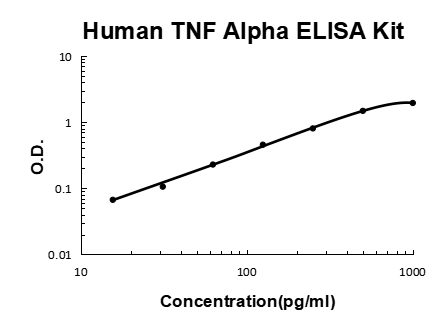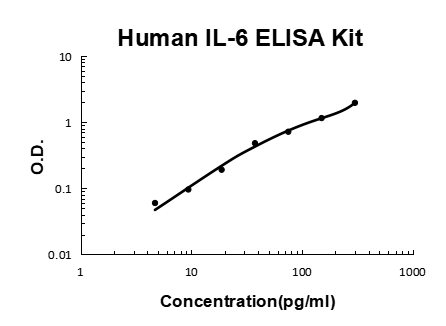Home » Posts tagged 'ELISA kit'
Tag Archives: ELISA kit
Know Details About BCA Protein Estimation Kit
The BCA protein assay was described in 1985 to determine protein concentration by means of bicinchoninic acid (BCA). As from the Lowry assay, the biuret reaction is the very first step in the response that happens from the BCA assay. In this response, protein reduces Cu2+ to Cu+ in an alkaline environment.
Following that, BCA responds with Cu+-ions to make a purple coloured complex which has an absorbance at 562 nm. The absorbance increases linearly with increasing protein concentration within a wide working range. You can buy a high-quality BCA protein estimation kit via https://www.bosterbio.com/bca-protein-assay-kit-ar0146-boster.html.

Even though the technique contains 2 responses, it merely requires the inclusion of one reagent. Following the decrease in this divalent copper ion, Cu+ responds with BCA. Afterward, the chelation of 2 molecules of BCA with a single cuprous ion creates the purple coloured response.
The very first response happens at lower temperatures and is also the end result of aluminum and BCA interaction using aminoacid residues from the protein. At elevated temperatures, the peptide bond is accountable for colour development. BCA protein quantification kit is valuable as it doesn’t interact with as many contaminants and buffer elements because the Folin-Ciocalteu reagent, particularly detergents.
Components that interfere with the BCA protein quantification kit lead to the reduction of Cu2+ (like DTT) or are copper chelators (like EGTA). Ordinarily, these aren’t critical elements of buffers and omissible before the assay.The BCA assay has many benefits over other protein determination methods. That’s because there is less susceptibility to detergents, is user friendly and the colour complex is steady.
The Need Of BDNF ELISA
Brain-derived neurotrophic factor (BDNF) plays a significant role in neuronal survival and development, serves as a neurotransmitter modulator, and participates in neuronal plasticity, which is vital for memory and learning. It’s broadly expressed in the CNS, gut and other cells.
BDNF and insulin-like growth factor-1 have comparable downstream signaling mechanisms comprising both p-CAMK and MAPK that increase the manifestation of pro-survival genes. Brain-derived neurotrophic factor modulates energy and glucose metabolism and prevents fatigue of β cells. You can know more about high-quality BDNF ELISA via https://www.bosterbio.com/human-bdnf-picokine-trade-elisa-kit-ek0307-boster.html.

Reduced levels of BDNF are related to neurodegenerative disorders with neuronal loss, for example Parkinson’s disease, Alzheimer’s disease, multiple sclerosis and Huntington’s disease. Therefore, BDNF might be helpful in the prevention and control of many diseases like diabetes mellitus. The BDNF gene provides instructions for making a protein within the brain and spinal cord called brain-derived neurotrophic element.
This protein promotes the survival of neural cells (neurons) by conducting a part in the development, maturation (distinction ), and upkeep of those cells. In the mind, the BDNF protein is more lively in the links between nerve cells (synapses), in which cell-to-cell communication happens. The synapses may change and adapt over time in response to adventure, a feature known as synaptic plasticity.
Individual BDNF quantitates human BDNF in serum, plasmascreen, supernatant. The assay will only recognize both natural and recombinant human BDNF. BDNF (Brain-Derived Neurotrophic Factor) is a part of the neurotrophin family. BDNF is broadly expressed in the central nervous system also functions in an autocrine and paracrine manner on many types of neurons.
Learn More About TNF ELISA
Tumor Necrosis Factor alpha or TNF alpha, is an inflammatory cytokine generated by macrophages/monocytes during severe inflammation and is in charge of a wide selection of signalling events inside cells, resulting in necrosis or apoptosis. The protein can also be crucial for immunity to disease and cancers.
TNF alpha shows many of its effects by binding, to a cell membrane receptor termed TNFR-1 or TNFR-2. These two receptors belong to the so-called TNF receptor superfamily. You can know more about high-quality TNF ELISA at https://www.bosterbio.com/human-tnf-alpha-picokine-trade-elisa-kit-ek0525-boster.html.

The defining characteristic of those receptors is an additional cellular domain constituted of two to six repetitions of cysteine rich themes. Furthermore, a range of related “decoy receptors” exist which act to sequester TNF molecules, thus preventing cells from apoptosis. The crystal structures of TNF alpha, TNF beta, the extracellular domain of TNFR-1, and also the TNF beta sTNFR-1 complicated have been characterized by crystallography.
The Human Tumor Necrosis Factor alpha ELISA quantitates Hu TNFα in human serum, plasma, buffered solution, or cell culture medium. The assay will only comprehend both natural and recombinant Hu TNFα. The Individual TNFα solid-phase sandwich ELISA was created to quantify the amount of this goal bound involving a coordinated antibody pair.
A target-specific antibody was pre-coated from the wells of their provided microplate. The sandwich is formed by the inclusion of the next antibody, a substrate solution is added that responds with the enzyme-antibody-target complicated to make measurable signal. TNF alpha is a multifunctional pro-inflammatory cytokine that belongs to the tumor necrosis factor (TNF) superfamily.
Learn About IL-6 ELISA
Interleukin-6 or IL-6 is a multi-functional cytokine that modulates immune reactions, acute phase reactions and hematopoiesis and might play an essential role in host defense mechanisms. The receptor for individual IL-6 was localized to chromosome 7p21. The genomic sequence was determined.
IL-6 is generally not produced constitutively by ordinary cells, but its expression is easily induced by various cytokines, lipopolysaccharide, or viral diseases. The IL-6 gene product is a single-chain protein with a molecular mass ranging from 21 to 28 kDa, based on the mobile source. You can buy high-quality IL-6 ELISA kits at https://www.bosterbio.com/human-il-6-picokine-trade-elisa-kit-ek0410-boster.html.

IL-6 is a pleiotropic cytokine made by many different cells. It functions on a broad selection of cells, constituting growth-induction, growth-inhibition, and distinction respectively, based on the character of the cells. IL-6 is included in the induction of B-cell distinction, the induction of acute-phase proteins in liver tissues, expansion marketing of myeloma cells, growth and differentiation of T cells, and induction of the differentiation into macrophages.
The abnormal production of IL-6 was initially suggested to be associated with polyclonal B-cell activation together with autoantibody production in patients with cardiac myxoma. Ever since that time, IL-6 was suggested to participate in the pathogenesis of many different ailments. Interleukin 6 is a multifunctional protein originally found in the medium of RNA-stimulated fibro-blastoid cells.
IL-6 seems to be directly involved in the responses that occur after infection and cellular injury, and it might turn out to be significant as IL-1 and TNF-a in controlling the acute phase reaction. IL-6 is a really beneficial culture nutritional supplement for the creation of a lot of antibody-producing hybridomas.
 Hi, my name is Martin and I am a teacher at Davis School of sports, Sacramento. Learning new stuff and writing about the latest topics is my hobby. I came up with Blue Water Fishing Classic so that knowledge can be shared without any limitations.
Hi, my name is Martin and I am a teacher at Davis School of sports, Sacramento. Learning new stuff and writing about the latest topics is my hobby. I came up with Blue Water Fishing Classic so that knowledge can be shared without any limitations.